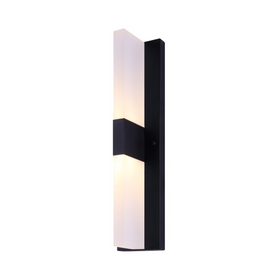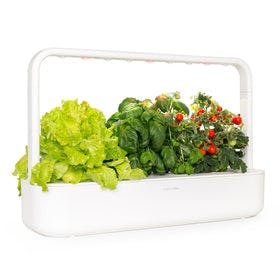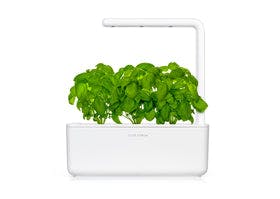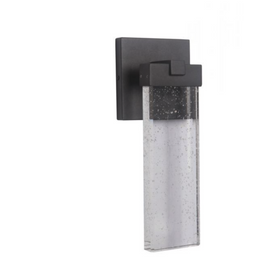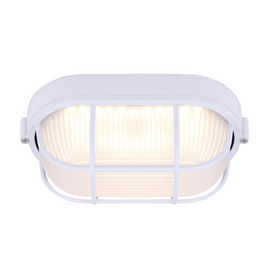
Balcony Gardening: What Plants Grow Best?
Last Updated: Mar 29, 2025Certain vegetables can experience limitations on what they can do in their containers. But since then, we've researched our garden space and had enough time to calculate the light it receives. After picking a couple of container options and prepping the soil, it's time to choose our plants. But what are the best options for a potted garden?
If you missed Part 1, No Yard? Try Gardening on Your Balcony; we highly recommend you give it a read!
Plants to Consider for Your Balcony Garden
Choosing the right plants for your balcony garden is crucial. Too small of a plant for the pot and its roots can't take full advantage of the medium, wasting nutrients and valuable growth space. Too small of a container, and your plant becomes stunted, unable to grow to its full potential, causing you to lose out on harvest potential.
While only you can know which plants will succeed in your unique balcony or patio setting, here are ten recommended vegetables for a potted garden:
Table of Contents
- What Is Companion Planting?
- Feeding Strategies
- What Are Some Plant Feeding Strategies?
- Creatively Responding to Change
- Anticipate Animals
- How Often Should You Water Potted Plants?
- How Do You Keep Tall Plants Upright?
- Running Out of Room

Not seeing a vegetable, you were hoping to make this list? Don't let these options stop you! Kathy LaLiberte with Gardener's Supply Company has compiled a great list of pot and planter vegetables to consider, including soil depth recommendations for each.
It's important to note that not every vegetable will grow well in a container. Unfortunately, some plant varieties, like melons, corn, and pumpkins, are going to require too much space for your pots to contain. Always be sure to research gardening your specific plant choices in pots before you begin. I've missed this step before, only to have a lackluster crop at the end of the season.

On top of what plants you choose, it is best to ask yourself what growing strategy you wish to adopt: companion planting or single plants per pot. I have planted pots with multiple vegetables in a single container, taking advantage of companion planting for a beautiful and wild garden. And I have also planted pots with a single vegetable and found them capable of producing just as delicious quality foods.
What Is Companion Planting?
Companion planting is gardening with various plants in the same area, pot, or container. Companion planting can increase crop productivity, pollination, pest control, creating an environment for beneficial insects, or maximizing space use.
The most common companion planting options include mixtures of vegetables, herbs, and even flowers. But don't confuse companion planting with giving your plant a companion. Not all plants work well together for various reasons, whether it be the nutrients they hunger for or the insects they bring. I always recommend researching which plants work best together and what ones would rather fight for their survival before you plant.

If you're interested in companion planting options, the Garden Design website has a comprehensive collection of plants with their companions listed and is a great place to begin your research.
Now, as I said, I've planted containers both with guilds and single plants and have found success in both scenarios. Other than being sure to choose plants of a similar sun requirement for similar pots, my recommendations would be to stay away from layering too many companions with your tomato plants.
While a pairing of tomato, onion, and basil is a classic polyculture, tomato roots are pretty adventurous and quickly dominate the limited potted soil. If you want to layer other crops under these greedy plants, consider mixing some fast-growing greens like lettuce. This plant matures rapidly, covering the soil with an edible layer until the tomato plants are producing.
And, don't worry, your container combinations don't have to be based solely on strengths and weaknesses. I have grown many pots meant to be self-contained treats. These planters are typically large containers growing fresh tomatoes and herbs for our homemade pizza or the ingredients for a spicy summer salsa. Lone Pine Publishing has produced a great collection of edible container gardening books that I have found helpful in designing my potted garden in the past, and I would recommend it.
Nervous about adding another vegetable to your pot? Have you considered edible flowers? Besides a great addition to a plate for the color they bring, flowers also add unique flavors to a meal. My favorite flowers to plant alongside my containers are nasturtiums which bring surprising flavors and scents with each flower you pluck. You can also consider flowers like pansies and violets.

Feeding Strategies
In our last article, we discussed using slow-release fertilizers when adding your soil. These nutrients are likely not going to be enough for your heavy feeding plants as the season progresses.
What Are Some Plant Feeding Strategies?
Balanced plants produce nutritious crops, which means it's essential to feed your plants according to their consumption habits. With a standard 5-gallon container, I found that I was providing my plants every one-to-two weeks with a mixture of Nitrogen (N), Phosphorous (P), Potassium (K), Calcium (Ca), and Magnesium (Mg).
Your plants will give you signs ranging from slight yellowing of the leaves to dark rust-colored patches, informing you of what specific nutrients they are missing. But you aren't the first person to have this happened to you, and you won't be the last! That means that there are plenty of guides out there for identifying what nutrients your plant needs.
There are three feeding strategies that can't be overlooked:
- Always follow dilution ratios because the last thing you want is to burn your plants with too much fertilizer.
- Don't forget your Calcium-Magnesium! A balanced plant is a healthy plant, and calcium makes up that diet.
- Don't fertilize your dry plants. Instead, water first and then feed an hour later with your fertilizer. This one I learned more recently, and I have to agree with Meghan over at Horticulture Magazine. I experienced plenty of times trying to fertilize a dry container, only to have most of the food drain out the bottom without saturating the soil. By watering first, you give your plants a drink and prime the roots for the food that follows.

Creatively Responding to Change
The twelfth principle of permaculture teaches us to respond to change creatively. Through this principle, I have learned to embrace my gardening mistakes and get a little creative with solving them. Here are some things I've learned that I think would be a help to other balcony gardeners.
Nature is your ally. The weather is not.
Rapid changes brought about by the Climate Crisis have caused our seasons to be prone to drastic shifts to seasonal extremes. A hot and sunny day is an excellent part of the summer for us, but on the other hand, your potted plants may require additional watering at some point later in the day.
Same as in the garden, be sure to water your pots in the morning before the sun is too high. This strategy gives the soil time to moisten the roots, giving the plants a nice drink of water before a busy day of photosynthesis. When watering on these exceptionally sunny days, be sure not to spray over the leaves or run the risk of creating a sunburn on the tender plants.
I recommend downloading a weather app and checking it daily or at least every other day. It's good to know when sudden shifts may be heading your way. Take windstorms, for example. Aside from wind quickly drying a pot, each leaf acts as a small wind sail, and with enough of them, it doesn't take much to send a whole plant tumbling.
When you have large plants, it's never fun to come back home to find them on the ground. So, if your site is prone to high winds, consider using something to keep your trellis secure. And if all else fails, the benefit of pots is that you can move them. If you see your plants starting to show signs of heat stress or there's hail is on the horizon, bring them under the shade until it's safer.
At the other extreme, pots come in handy when dealing with cold temperatures. Depending on your containers' size, you can begin your plants inside in cold climates and bring them out into the warmth when it won't harm the plant. This process is known as hardening off. It can also extend your growing season by a few days to weeks by keeping your plants protected from frost in the evenings and bringing them back out in the warmth of the day.
Anticipate Animals
No matter where you live, anticipate that animals will eventually become curious about your garden but don't expect them to destroy it. I have seen squirrels, raccoons, cats, dogs, and rats wander around my neighborhood and have only had my ground-level containers dug into once.
Animals get curious and want to see what suddenly appeared in their territory, and we can't blame them for that. Keeping plants healthy and harvesting often is enough for them to last a few years to keep animals from containers, but every location is different. If you live in an area with a shortage of wild food plants, your garden may be all those critters have, and that can be quite the temptation for them.

How Often Should You Water Potted Plants?
Through trial and error, we've all overwater and underwater our plants, accidentally. On exceptionally sunny and warm days, check the pots often and anticipate that you may need to water twice. On cloudy, rainy days, you may not have to water and can often take your plants out from under the overhang into the rain for free foliar watering. Ensure you're not allowing too much water to pour from the bottom of your container. That could be leaching away vital nutrients your plants need to produce crops.
If you're finding you're draining water exceptionally fast from the bottom of your pot, The Spruce recommends a coffee filter at the bottom to slow the runoff. But what if your soil is becoming waterlogged at the bottom? If your pots are draining too slow, the Farmers Almanac recommends adding an inch of course gravel to the container's bottom to help with drainage. I wouldn't recommend much more than that, though, because, with each rock, you add to your pot, you're making ever so slightly heavier.

How Do You Keep Tall Plants Upright?
Trellis your tall and climbing plants, and do it early. It is best to add your supports at planting time so you don't disturb the roots later. You'll need to choose your trellis depending on the available space and plant. I am a fan of harvesting branches from nearby trees and fashioning them into a frame and have done this for the past few years.
Running Out of Room
It is both the worst feeling and the best feeling at the same time. You have successfully grown all your balcony can hold, and that's a fantastic accomplishment. But the problem is that you have now realized you have a green thumb and want more. Hanging baskets can be an excellent place for herbs, cherry tomatoes, and even strawberries, taking advantage of some ceiling space. Salad greens and certain herbs also do well in lower light conditions and can be positioned in smaller pots in the shadier corners for a small crop. Or you could even plant them on a container inside or hanging from your windowsill!
Growing a garden takes time, so you are doing it right if you come across multiple challenges in a single season! Every year you grow a container crop, you will find the process easier and more manageable. Eventually, you will begin experimenting with different planting strategies and feel the itch to plant an even bigger garden. It's a great feeling, and all it takes is a little space on your back patio or balcony.
Tanner Sagouspe
Tanner Sagouspe has a Masters in Environmental Management and is a Permaculture Designer who promotes tackling the climate crisis at home.




